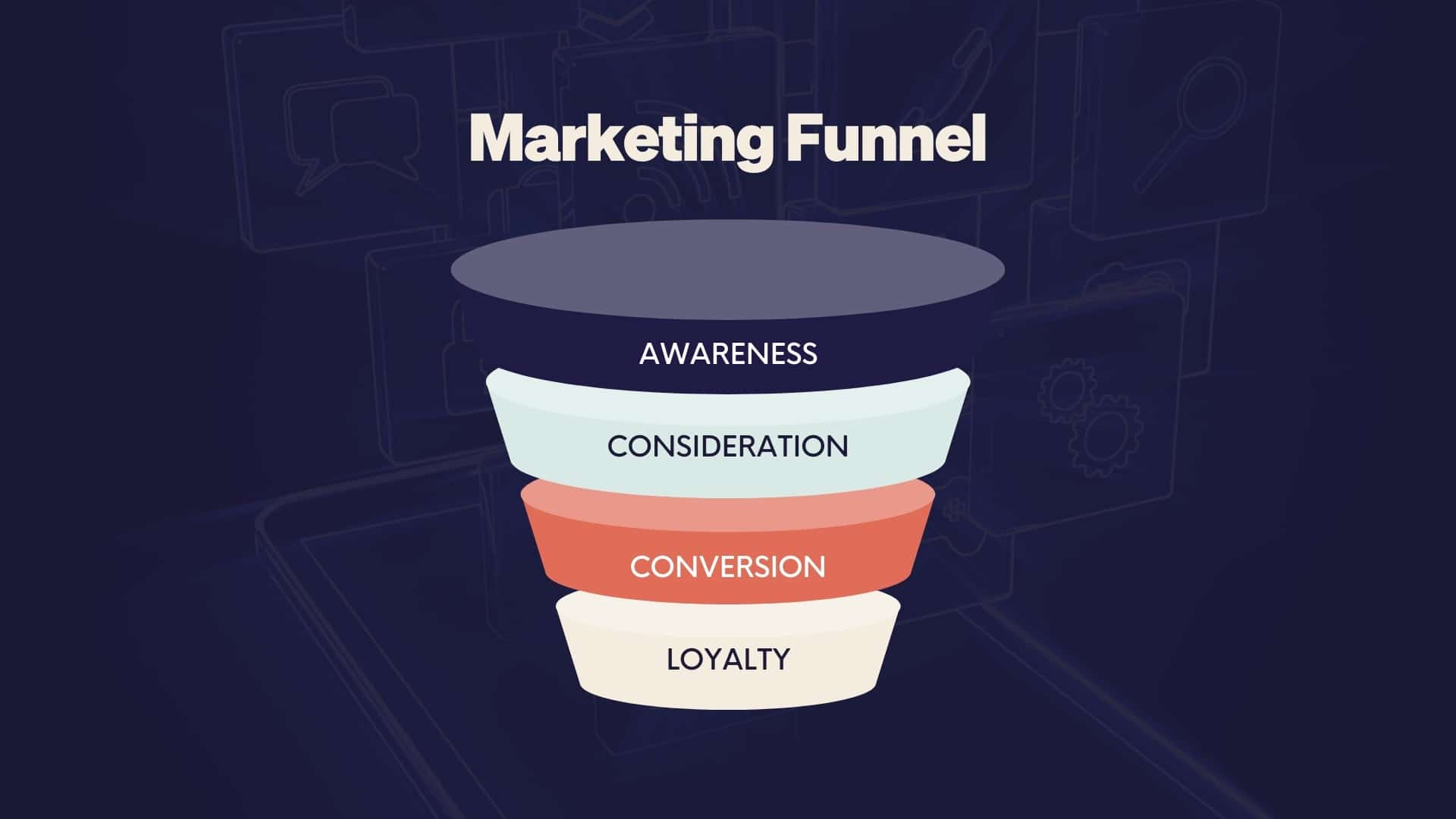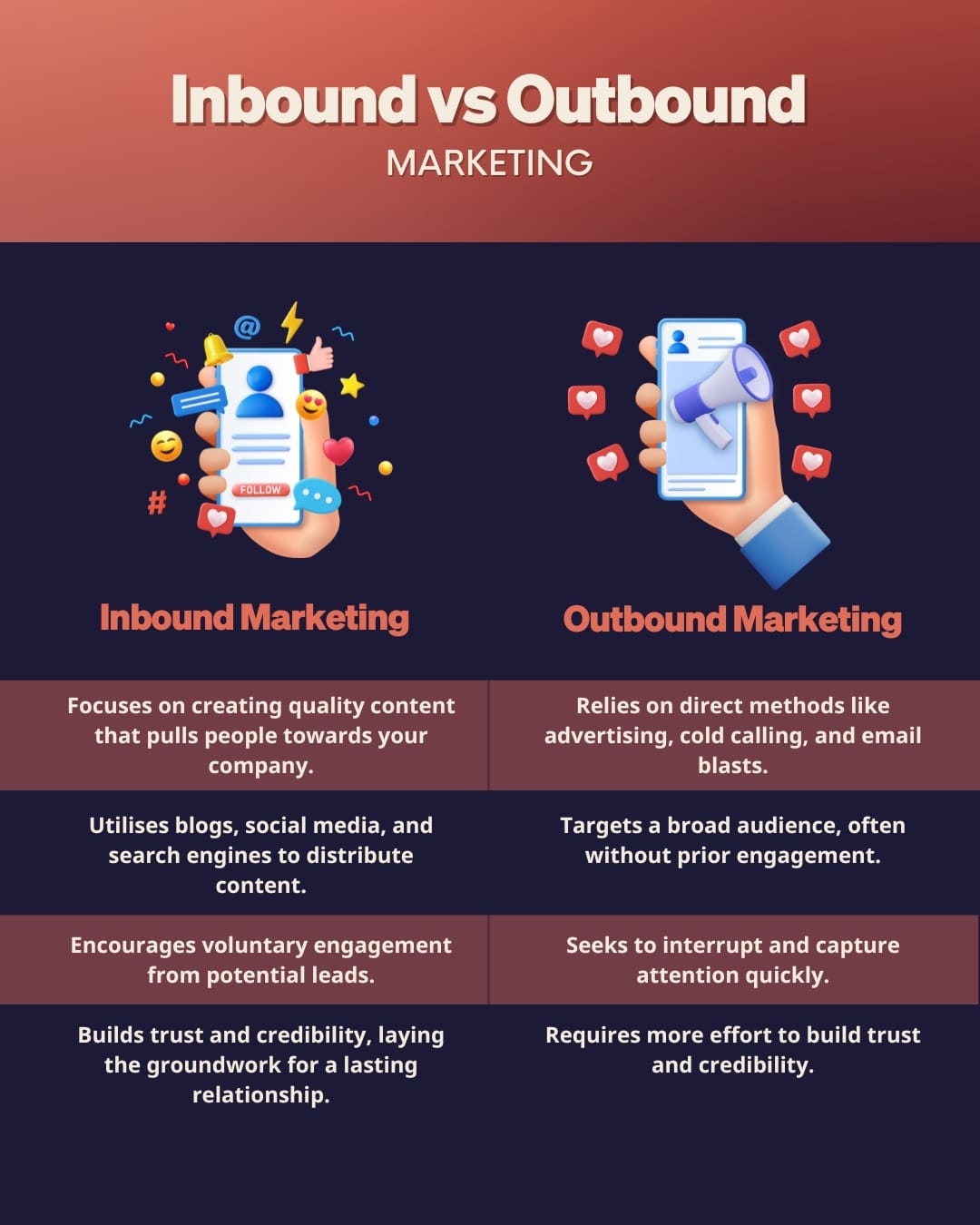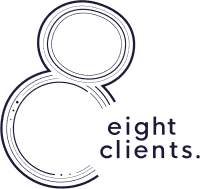What Is Lead Generation And How To Get Inbound Leads?
Did you know that 50% of marketers consider lead generation a top priority in their marketing campaigns? This means that attracting and converting strangers into interested individuals plays a significant role in connecting businesses with potential customers. So what exactly is lead generation, and what defines a lead?
Understanding these concepts is bridging the gap between businesses and potential customers. Lead generation isn’t just about drawing people in; it’s about sparking interest in what your brand has to offer. But here’s the kicker: the digital revolution has completely transformed how we approach generating inbound leads.
Are we clinging to the past with outdated methods, or are we ready to embrace the new, consumer-driven world? This shift challenges us to rethink our strategies. After all, sticking to the old ways in an era of rapid consumer behaviour changes can leave businesses struggling, watching precious opportunities slip through their fingers. How are you keeping up with these changes, and what strategies have you found effective in this fast-paced digital age?
Understanding Lead Generation
At the heart of any thriving business is the ability to attract and engage new customers. This is where lead generation plays a role. But what exactly is it? Simply put, it’s the process of sparking interest in your business’s products or services to develop a sales pipeline. It’s about creating opportunities for conversation and conversion, turning strangers into someone who has shown interest in what your brand can do.
Why is lead generation crucial for businesses? In today’s competitive market, having a great product or service isn’t enough. Businesses must actively reach out and capture the attention of potential customers. Lead generation is the first step in this journey, serving as the bridge between a business’s marketing efforts and its sales results. It’s about identifying the people who are most likely to become your customers and making the first move to get them on board.
Lead generation’s impact on driving growth and sales allows businesses to:
- Target desired customers: Lead generation strategies are tailored to reach specific segments of the market, ensuring that marketing efforts are focused on the people most likely to buy.
- Increase brand awareness: Every interaction with a potential lead is an opportunity to share your brand’s message and values, expanding your business’s visibility.
- Build relationships: By initiating contact with potential customers, businesses can nurture a connection, even before a sale is made, laying the foundation for loyalty and long-term engagement.
- Enhance credibility and trust: Providing valuable information and solutions to potential customers through your lead-generation efforts can establish your business as a trusted authority in your field.
Inbound Vs. Outbound Lead Generation: Key Differences For Effective Marketing Strategies
How is inbound different from outbound lead generation? Inbound lead generation focuses on drawing potential customers to your brand through engaging, valuable content and interactions that build trust over time. This method leverages tools like SEO, content marketing, and social media to attract leads organically.
Outbound lead generation adopts a proactive stance, utilising direct communication channels such as email campaigns, cold calls, and traditional advertising to initiate contact with potential customers. Each approach has its unique strengths, with inbound offering a cost-effective, credibility-building path, and outbound providing a direct, broad-reach tactic for quick lead generation.
What is Inbound Lead Generation?
Inbound lead generation, often described as ‘pull marketing,’ is all about creating and sharing content that draws people towards your company. This strategy leverages valuable, relevant content, SEO, and social media tactics to attract potential customers to your brand. The goal is to provide information that solves problems or answers questions, establishing your business as a trusted resource. When done correctly, inbound lead generation not only attracts leads but also nurtures a relationship with them, making it more likely they’ll choose your services when ready.
Key Characteristics of Inbound Lead Generation:
- Focuses on creating quality content that pulls people towards your company.
- Utilises blogs, social media, and search engines to distribute content.
- Encourages voluntary engagement from potential leads.
- Builds trust and credibility, laying the groundwork for a lasting relationship.
What is Outbound Lead Generation?
On the contrary, outbound lead generation, or ‘push marketing,’ involves proactively reaching out to potential customers. This approach uses more traditional methods such as cold calling, direct mail, and paid advertising to push the company’s message out to a broad audience. Outbound strategies aim to interrupt and capture the attention of potential leads, hoping to spark interest or identify a need.
Key Characteristics of Outbound Lead Generation:
- Relies on direct methods like advertising, cold calling, and email blasts.
- Targets a broad audience, often without prior engagement.
- Seeks to interrupt and capture attention quickly.
- Requires more effort to build trust and credibility.
The Inbound Lead Generation Process
Inbound lead generation can feel a bit like detective work. You’re piecing together clues (data and content) to solve the mystery of how to turn strangers into loyal customers. Here’s how you can crack the case, step by step:
- Attract: Where Strangers Become VisitorsImagine you’re throwing a party (your website) and you want the right people to show up. How do you get the word out? You start by sharing engaging stories, helpful tips, and insights on platforms where your ideal guests hang out— this could be through engaging videos about the latest digital marketing trends on TikTok or insightful how-to guides and posts on Meta (Facebook and Instagram). The key is to share content that answers their burning questions or solves a problem they’re facing. It’s like sending out an invitation they can’t resist.
- Convert: From Visitors to LeadsNow that you’ve got visitors at your party, you want to get to know them better. You might offer them an exclusive guide on SEO best practices in exchange for their email address. It’s a win-win: they get valuable information, and you get their contact details to keep the conversation going. Think of it as asking for their phone number because you genuinely want to catch up again.
- Nurture: Building the RelationshipWith their contact information in hand, you start sending them personalised emails with more content they’ll love, like case studies showing how businesses have succeeded with your digital marketing strategies. It’s not about bombarding them with sales pitches; it’s about providing value and building trust over time. You’re essentially saying, “Hey, I understand what you’re going through, and I’m here to help.”
- Close: Turning Leads into CustomersAfter all that effort, you’re ready to make your move. But instead of a hard sell, you guide them towards deciding that choosing your services is the best solution to their problem. Maybe you offer a free consultation to discuss their digital marketing needs in detail. It’s like after all those coffee dates, you’re finally asking, “So, are we doing this?”
- Delight: Beyond the SaleThe relationship doesn’t end at the sale. You continue to support them with outstanding service, exclusive content, and check-ins to ensure they’re getting the most out of your services. It’s about turning happy customers into raving fans who’ll tell their friends about you. Think of it as ensuring your guests had such a great time at your party that they can’t wait for the next one.
Types of Leads: Marketing Qualified Leads vs Sales Qualified Leads
Marketing Qualified Leads (MQLs): The First Step Towards Conversion
MQLs are those that showed interest in what your business has to offer but aren’t quite ready to make a purchase. They are typically identified through their engagement with your marketing content—be it downloading an eBook, signing up for a webinar, or spending significant time on your product pages. However, while they’ve taken actions that indicate interest, they might still need more information or nurturing before they’re ready to buy.
Why MQLs Matter:
- Targeted Nurturing: Knowing who your MQLs are allows you to tailor your marketing efforts to continue educating and engaging them, moving them closer to a buying decision.
- Efficiency: Focusing on MQLs helps your marketing team concentrate resources on leads that are more likely to convert, improving ROI.
Sales Qualified Leads (SQLs): Ready for the Sales Pitch
SQLs are a step further down the funnel; they are leads that have been evaluated by both marketing and sales teams and are ready for direct sales engagement. An SQL has demonstrated a clear intent to buy, perhaps by requesting a product demo, asking detailed questions about pricing, or indicating a specific need that your product can fulfil.
Why SQLs Matter:
- Higher Conversion Rates: SQLs are more likely to become customers, making them a high priority for your sales team.
- Alignment Between Sales and Marketing: The process of qualifying an SQL requires collaboration between marketing and sales, ensuring both teams are working towards the same goals.
From MQL to SQL: Bridging the Gap
Think of the journey from MQL to SQL as a guide through a decision-making process. Initially, they’re curious—peeking through the window, so to speak (that’s your MQL). They’re interested but not yet ready to walk through the door. Your job? To chat with them, answer their questions, and maybe even show them around a bit more (this is where lead scoring and engaging conversations come into play). You’re essentially checking if they’re ready to come inside (become an SQL).
This step is super important because it’s where you get to really connect and ensure they feel confident about their decision. It’s all about teamwork between the marketing folks, who’ve been hosting the initial conversation, and the sales team, ready to welcome them in. Sharing notes and understanding what they need ensures they don’t just walk away. Instead, they step through the door, ready to make a decision.
How To Use Data For Lead Generation
To have an effective lead generation strategy, understanding and learning how to understand data is crucial. The ability to collect, analyse, and act on data can significantly affect how businesses attract and convert leads effectively.
Leveraging The Power Of Data
Imagine navigating a city without a map. You might eventually reach your destination, but it’ll take longer and involve a lot of wrong turns. In lead generation, data is your map. It guides your decisions, helping you reach your goals more efficiently:
- Identifying Who Your Leads Are: Data helps you paint a detailed picture of your potential customers. By analysing interactions, behaviours, and demographics, you can create ideal customer profiles—blueprints of your perfect leads. These profiles enable you to tailor your marketing efforts, ensuring you’re speaking directly to the needs and interests of those most likely to convert.
- Prioritising Your Efforts with Lead Scoring: Not all leads are created equal. Some are ready to buy, while others are just beginning their journey. Lead scoring, a system that ranks leads based on their engagement and behaviour, helps you prioritise your efforts. By focusing on leads that are more likely to convert, you can allocate your resources more effectively, increasing your ROI.
Data-Driven Strategies in Action
Using data effectively means going beyond collecting numbers; it’s about turning insights into action. Here’s how:
- Collect Data Across All Touchpoints: Every interaction with a potential lead is a data point. Whether it’s a visit to your website, a download of your eBook, or an engagement on social media, tracking these actions provides valuable insights into what your audience cares about.
- Analyse for Insights: With tools like CRM software and analytics platforms, you can sift through the data to identify trends, preferences, and patterns. This analysis can reveal which content resonates with your audience, the most effective channels for engagement, and the behaviours that indicate a lead is sales-ready.
- Implement and Iterate: Armed with insights, you can refine your lead generation strategies. Perhaps the data shows that certain blog topics drive more engagement, or that leads from social media are more likely to convert. Use this information to adjust your tactics, always aiming to better align with your ideal customer profiles.
Why It Matters
In a marketplace crowded with competitors vying for attention, using data to inform your lead generation strategies isn’t just beneficial; it’s essential. It allows you to make informed decisions, personalise your marketing efforts, and ultimately, convert more leads into customers.
Tips for Implementing Lead Generation Strategies
1. Optimise Your Content Creation Process
- Conduct Thorough Keyword Research: Identify topics that your target audience frequently search and incorporate relevant keywords to improve search visibility.
- Create Value-Driven Content: Focus on producing content that addresses your audience’s pain points, questions, and interests. This could be in the form of blog posts, eBooks, infographics, or videos.
- Guest Blogging: Collaborate with industry influencers or blogs to expand your reach and establish credibility.
2. Enhance SEO to Boost Discoverability
- Optimise Website Performance: Ensure your website is mobile-friendly and has fast loading times to improve user experience and search rankings.
- Build Quality Backlinks: Engage in strategies to acquire backlinks from reputable sites in your industry, enhancing your site’s authority and SEO.
- Regularly Update Content: Keep your content fresh and up-to-date to maintain its relevance and appeal to both your audience and search engines.
3. Leverage Social Media for Engagement and Visibility
- Identify the Right Platforms: Focus on platforms where your target audience is most active. For B2C, this might be Instagram and TikTok; for B2B, LinkedIn and Twitter could be more effective.
- Engage with Your Audience: Don’t just post content—interact with your followers through comments, messages, and live sessions to build a community around your brand.
- Run Targeted Social Media Ads: Utilise the advanced targeting options available on platforms like Facebook (Meta) and LinkedIn to reach potential leads with precision.
4. Implement Strategic Email Marketing Campaigns
- Segment Your Email List: Tailor your messages based on subscriber behaviour, preferences, and where they are in the buyer’s journey to increase engagement.
- Craft Compelling Subject Lines: Your subject line is your first impression—make it count by sparking curiosity or offering value.
- Automate Email Campaigns: Use automation tools to send timely follow-ups, nurture leads, and deliver personalised content at scale.
5. Continuously Analyse and Refine Your Strategies
- Track and Measure Performance: Use analytics to monitor the effectiveness of your lead generation efforts across all channels. Focus on metrics like conversion rates, click-through rates, and ROI.
- A/B Test Your Tactics: Experiment with different content formats, headlines, email templates, and landing pages to see what resonates best with your audience.
- Gather Feedback: Regularly solicit feedback from your audience and sales team to identify areas for improvement.
Maximise Your Lead Generation Success with Us!
In this article, we’ve learned what Lead Generation is, understanding the pivotal roles of MQLs and SQLs in leveraging data and implementing key strategies like content creation, SEO optimisation, social media engagement, and email marketing, Each step of the process offers unique opportunities to connect with you audience and guide them closer to your brand.
We’d love to hear from you—whether you’re just starting out on your lead generation journey or you’re looking to refine your existing strategies. Share your experiences, challenges, or questions, or better yet steal our ideas. Drop us a line and let’s work on turning those potential leads to loyal customers.









